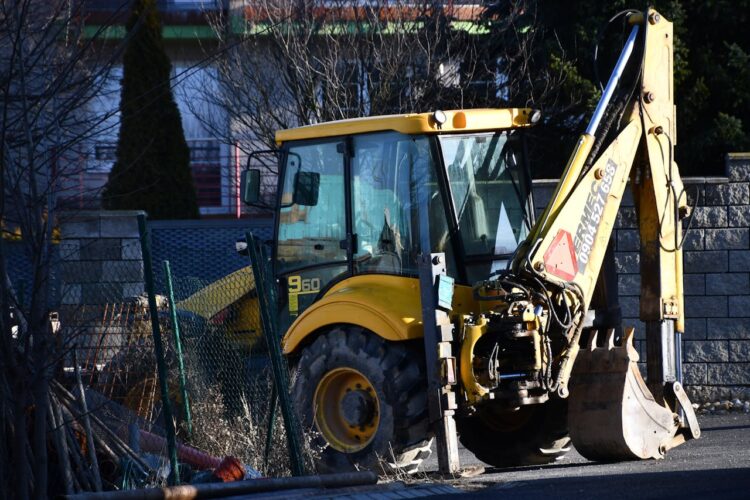Construction is an industry in high demand and high flux. The combination of a growing population and ‘net zero’ pledges have led to a huge spike in new developments and refurbishments. At the same time, the industry is trying to grapple with the staffing demands this has created, and the emergence of new technologies on site.
Amidst all this chaos, safety training provides an important point of focus. With so much change happening, site safety training—and the Site Safety Supervisor Training Scheme (SSSTS) in particular—is critical to maintaining our focus on safety, and navigating a busy period for the industry without allowing safety standards to slip.
Under construction
The need for more homes in the UK has been obvious for a number of years, with house prices skyrocketing due to limited supply. Continuing the efforts of the previous government, the new Labour administration is keen to get more people onto the housing ladder, both by reforming the rules around shared ownership properties, and increasing new housing stock.
The headline pledge was the creation of 1.5 million new homes over the course of this parliament, meaning in the next five years. Entirely new towns were also promised, along with making it easier to develop on urban brownfield land. On top of this, the UK’s continued commitment to achieving ‘net zero’ emissions by 2050 means that huge numbers of buildings will have to be refurbished to improve insulation and overall energy efficiency.
Added to all of this is the general uncertainty within the construction industry. A record 4,371 construction firms went into insolvency in the UK last year, the highest of any single industry, with almost 8,000 thought to be on the brink of collapse by the last quarter. At the same time as supply chain issues and cost pressures were putting the squeeze on businesses, staffing has also become an issue, with an estimated 225,000 new workers to be needed by 2027.
Practical problems
The chronic shortage of skilled workers is an undoubted issue. While demand is a factor, this has been exacerbated by factors such as an ageing workforce, Brexit-related immigration restrictions, and a decline in the popularity of vocational training. As a result, there’s a growing need for qualified and experienced site operatives, as well as site supervisors to oversee construction projects effectively, and ensure that safety standards are maintained.
This is pivotal if the new government’s commitments are to be met. The 1.5 million house target is an optimistic one, and will stretch resources and workers, making it increasingly tempting to skirt rules and cut corners. As we all know, however, this only leads to quality control issues further down the line, and can significantly jeopardise safety. One safety incident can lead to a site being shut down for days, wasting any time that was gained.
The construction industry is also being transformed by the rapid development of new technologies. Wearables, drones, and exoskeletons are just a few examples of the innovative tools that are being used to improve safety, efficiency, and productivity on construction sites. However, the introduction of new technologies also presents new challenges and risks, and imposes new training requirements at all levels. Site supervisors need regular refresher training to understand and effectively utilise these technologies, while also ensuring that they are used safely and responsibly.
The value of SSSTS training
SSSTS training provides site supervisors with the essential knowledge and skills to manage construction projects safely and effectively. The course covers a wide range of topics, including:
- Health and safety legislation, helping candidates to understand the legal requirements that apply to construction sites, and apply these on site. This is particularly important in the wake of the resolution of the Grenfell enquiry, and new laws on fire safety.
- Risk assessment and control, helping supervisors to identify and manage potential hazards, both proactively and in the course of ongoing work.
- Emergency procedures, giving supervisors the tools to develop and implement emergency plans.
- Site supervision, helping supervisors to more effectively lead and motivate teams of workers, from toolbox talks to people management.
- Communication and teamwork, providing tips to help supervisors build more effective relationships with colleagues and stakeholders.
By completing SSSTS training, site supervisors can demonstrate their commitment to health and safety and enhance their career prospects. The course can also help organisations to improve their safety performance, and reduce the risk of accidents and injuries, helping to win tenders and reassure stakeholders of the safety and consistent progress of a project.
–
Given the stakes involved in the push for more housing and more sustainable construction, SSSTS training is as important today as it ever has been. The course provides site supervisors with the tools they need to navigate the challenges and opportunities presented by job shortages, increased construction activity, and the rise of new technologies.
By investing in SSSTS training, individuals and organisations can help to create safer, more efficient, and more sustainable construction sites. As the industry continues to evolve and respond to even more new challenges, the need for qualified and experienced site supervisors isn’t going away—and nor is the Site Supervisor Safety Training Scheme.

